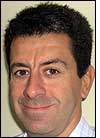Several British home-care organizations are trialling a Near Field Communication (NFC) system, known as O2 Home Care, in hundreds of homes in the United Kingdom. The system could change the way home-care records are tracked.
O2 Home Care is part of the vision of Britain’s largest mobile-phone service provider, O2, to bring NFC capabilities into the lives of U.K. mobile phone users. The O2 Home Care solution, provided by O2 in partnership with software company Reslink, enables home-care providers to input and access records regarding a particular patient, and the care he or she receives, using an NFC-enabled mobile phone to scan a tag in that person’s home. The service could be provided to mobile-phone users—either home-care companies or patients—and billed as an add-on expense for existing mobile services.
O2 has been developing a range of solutions using NFC technology over the past 18 months, for both consumers and corporate businesses, says Nigel Dean, head of O2’s health sector development. The solutions include a mobile-wallet that was trialled in London City Center in 2008 for six months. The test allowed participants to pay for purchases with Nokia NFC-enabled phones.
Five hundred participants used the phones to purchase merchandise in stores, as well as pay transit fares on London’s public transport system, by touching the phone to an NFC reader. Participants were later asked to submit feedback, and to evaluate the ease of use, security and overall usefulness. “That was our first foray in that area [NFC],” Dean says. It began “an ongoing discussion” with trial participants, he notes, including credit card companies and retailers. “It was very successful for opening those discussions.”
In the meantime, O2 began looking into business-to-business solutions that NFC could provide. That led to the partnership with Resling for a home-care solution. At present, most British patients who live at home but require health-care assistance receive such services from organizations that they pay privately, or that are funded by the government. When health-care providers enter a patient’s home, they use pen and paper to manually record, in the patient’s record, which services need to be provided, when the last visit occurred and their own visit. The patient may also be provided with a pendant equipped with an alarm mechanism in the event of an emergency, such as a fall.
An NFC system could make patient care more efficient and more visible, Dean says, by creating an electronic record that could be viewed by the patient, the home-care provider or a physician. So beginning in late 2008, O2 began offering its Home Care Solution for trials by several nationwide British home-care companies, which asked not to be named.
Employees who visit patients each carry a Nokia NFC-enabled phone. They attach an adhesive tag measuring 40 square millimeters (0.06 square feet), manufactured by one of several third-party providers, to a wall in the home of each participating patient. Each time a care provider arrives at the patient’s home, he or she then taps the mobile phone near that tag and captures its unique ID number. The phone then sends that ID number, as well as its own unique ID, to a server managed by Resling.
Resling’s Mobile Client Builder—phone user interface software—translates the data from the tag reads, links it to a patient and updates that individual’s records. It can also trasnmit the patient’s records back to the user’s mobile phone. In that way, the records can be updated to indicate that a specific health-care provider (the employee linked to the mobile phone’s ID number) has visited a particular patient (linked to the tag ID), as well as the exact time and date of the visit.
Although the trial has thus far been focused on these “time and attendance” details, Dean says, the system can also be used with many additional features. The home-care provider could access data regarding which services the patient has received, for instance, and follow a drop-down menu on the mobile phone that could instruct him or her to provide specific services, such as administering medication.
The user would then update the system by following prompts on the phone as to which services he or she has provided. Each menu option can be configured for a particular requirement, such as opening a Web page, requesting data input or making a remote call to retrieve data from any external database. “Dozens of different features can be customized for each single menu node,” says Claire Maslen, O2’s head of NFC.
In addition, the O2 system can be utilized to track the medications being taken. Home-care providers attach an NFC tag on a medication dispenser with a locking feature that, when prompted by the mobile phone, could release a specific number of pills for the patient when authorized. In this way, records of prescription drug use could be stored in the back-end system, while users would be prevented from accidentally taking too much of a specific medication. A patient could also use the NFC system for safety purposes, since it could include a feature to transmit an alert in the event of an emergency if that individual presses a prompt on his or her own mobile phone.
“We’re talking to a number of organizations,” Dean says, including other health-care providers, and the trial is expected to continue with additional features throughout the coming year. “This is not a trial with a strict procedure—we’re looking at how we can expand over time,” he says, predicting that “we can expect quite a dramatic expansion over time.” Feature expansions, he adds, “could only be limited by the imagination of the organizations that want to use it.”


